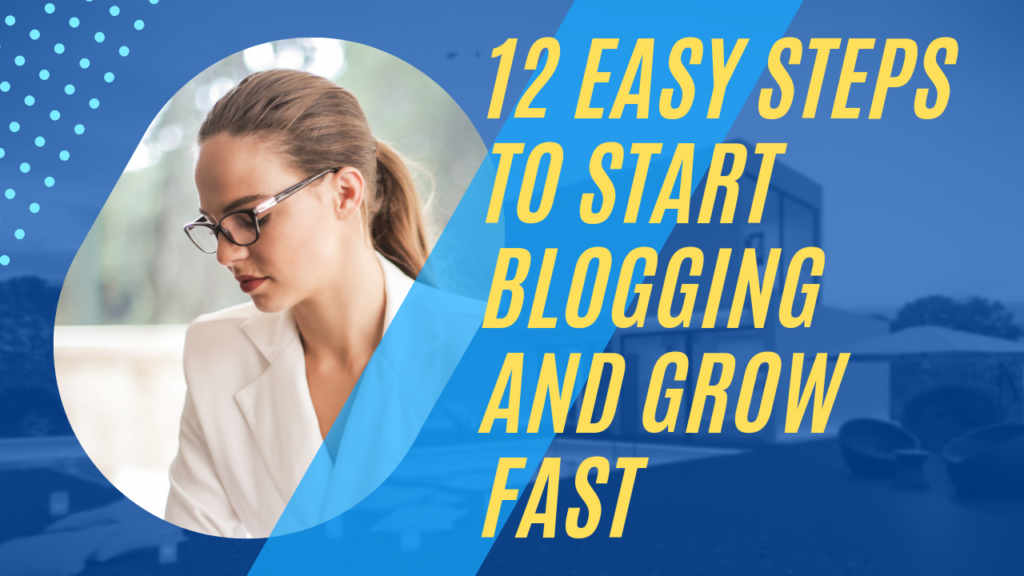Not Started A Blog Yet? How To Start A blog
SEO Content Writing
In the current digital scenario, just having a website or blog is not sufficient. SEO content writing has emerged as an integral part of the content writing to make it possible for the websites to appear at a higher position in the list of search engines.
Here, in this type of content writing, quality content that meets the standards of search engines and readers is written so that organic traffic will be improved along with other engagements.
This could sound so complicated if one were to approach this activity, especially for first-time SEO content writers, but having its basic aspects at the top of their mind can ensure a high degree of success.
Let us explore some basics, including how to research the perfect keyword and best tactics of on-page SEO to give way for content writing easy to work on.

What’s the Ideal Word Count for SEO?
There is no perfect word count for SEO, but 1,500-2,500 words tends to perform well for in-depth topics. Focus on content quality rather than length alone.
How Often Should I Use Keywords?
Avoid overusing keywords. A 1-2% keyword density is usually enough, meaning if you have a 1,000-word article, aim for around 10-20 uses of your primary keyword.
Do I Need Expensive Tools for SEO Content Writing?
Not necessarily. Many free tools like Google Keyword Planner and Ubersuggest can help with basic keyword research. Paid tools like Ahrefs and SEMrush offer more advanced features but aren’t essential for beginners.
Basic SEO Fundamentals for Writers
Keywords: Types, Importance, How to Find Them
A keyword is the phrase, or the word, that a person will type to search in the internet. Writing applicable keywords in your text ensures that search engines understand your content topic. It helps users find your website easier. There are two main classifications of keywords:
Short-Tail Keywords– just one word or two words in phrase, for example, “SEO” and “content writing.”
Long-Tail Keywords: these are more accurate phrases: “SEO content writing for beginners.”
LSI (Latent Semantic Indexing) Keywords: Keywords related to phrases, for example, “writing for SEO,” or “optimize blog posts or keyword research.”
Using an accumulation of these keywords tends to enhance your chances in ranking.
On-Page SEO: Optimizing Title, Meta Description, and Headings
Title Tag: This title should depict and be rich in main keyword.
Meta Descriptions: The summary underneath the title on search results. A good meta description should summarize the content and use a keyword in a natural way.
Headers (H1, H2, H3): Headers are used to break the content and make it more readable. Keywords appear organically within headers and aren’t overused.
Off-Page SEO Overview: Link Building and Social Signals
Off-page SEO refers to everything outside of your content that helps influence rankings. This encompasses, but is not limited to:
Link Building: Getting links from quality sites enhances the credibility of your content.
Social Signals: When you share content on social media and get shares, comments, and likes, it signals relevance and quality to search engines.
Keyword and Topic Research
Tools and Methods for Keyword Discovery
Keyword research is the key to knowing what your audience is looking for. Here are some popular tools to get you started:
Google Keyword Planner: Free, good for basic keyword insights.
Ubersuggest: Suggests keywords, offers traffic data, and conducts a competition analysis.
Ahrefs: Paid resource providing detailed SEO data. Such as keyword difficulty and competitor analysis.
Understanding Search Intent
Search Intent is what the user hopes to achieve entering the query. If the content matches the search intent, you are likely to rank well. The main types of search intent include:
- Informational: The user wants to learn something (“how to write SEO content“).
- Navigational: An individual is trying to find a specific page; example would be, for instance “Moz blog.”
- Transactional: A person tries to view your pages to buy an item such as “buy SEO tool.”
Choosing Relevant Keywords
- After you have defined which categories best describe what you and your audience do, ensure that all keywords for those terms also capture needs and want.
- Longtail Keywords, not necessarily less, can mean being super targeted or hyper-local depending on how a reader puts in his searches.
- When writing quality content think what the user would require- broad as well as long tail keyword phrase based upon what users query for information on what would trouble him, or curious they become regarding certain topic
- While it’s tempting to write only for the search engines, the quality content should prioritize the readers first. Google favors the content that is helpful, informative, and readable.
Writing a Strong Introduction and Structure
Start with an engaging introduction that grabs the reader’s attention. Good structure includes an introduction, clear headers, bullet points, and a logical flow that makes it easy to read for the readers.
Keywords Use Naturally and Avoiding Keyword Stuffing
Keyword duplication can hurt your rankings. Use keywords naturally as much as possible in the flow of content. Target a keyword density of 1-2% and vary the content by using synonyms or related words.
On-Page SEO Elements to Enhance the Content
Adding Headings, Alt Tags, and Internal Links
- Headings: Outline the content with H1, H2, and H3 tags to look hierarchical. Your target keyword must be present in at least one header.
- Alt Tags: Use relevant alt tags on images, giving search engines a better understanding of the images and improving the accessibility as well.
- Links to Your Website: Link to other pages on your site to keep readers engaged and improve SEO. For example, if you mention keyword research, then link to a relevant blog post about it.
Writing Great Meta Descriptions
Meta descriptions may also boost click-throughs if well-written. Keep them shorter than 160 characters long, make sure that the main keyword is present, and let people know why they would want to read your content.
Images and Multimedia
Images and multimedia increase the user experience. Compression of images will decrease the loading time of a page. Including keywords in the file name, as well as the alt tags, will boost chances for good keyword placement.
Crafting Interesting Content
How to Write Readable, Informative, and Compelling Copy
Good content is that which answers questions, gives insight, and keeps the reader reading. It is conversational in nature, free of jargon as much as possible to keep it simple and accessible.
Storytelling Techniques and Formatting for Clarity
A story or real-life examples will make your content highly relatable. Proper formatting, such as bullet points, short paragraphs, and bold text, will increase readability.
Tips to Keep Readers on the Page (Reducing Bounce Rate)
Keeping readers longer on your page is great for SEO. Here’s how:
Images and infographics, or short videos, can separate a lot of text. There should be a table of contents to make the material easy to navigate through by readers. The conclusion needs a call to action, possibly pointing to more related information.
Examples of Good SEO Content Writing.

Here are a few brief examples of effective SEO content writing:
- Listicles: “10 Tips for Writing SEO Content” – A list of action-able tips with some keyword weaved in.
- How-to Articles: “How to Research Keywords for SEO Content” – Instruction-based article that illustrates keyword research, using “SEO” and “keyword research” in the same sentences in which they occur.
- Case Study: Talk about the success story of one such article that became well-ranking with good SEO strategy. Let people know how those keywords were used and the output of the outcome.
SUMMARY
It will take some time to perfect this, but if you do it right, you’ll find that content you are creating ranks very well in the search engines and also finds an audience with it. Keyword research, on-page optimization, and quality can all work for you as you craft content that not only attracts visitors but keeps them there.





Pingback: Your Blog Promotion Checklist: 10Simple Steps to Boost Visibility - PROFITS NATION
Pingback: Maximize Your Organic Traffic with On-Page SEO - PROFITS NATION
Pingback: How To Start Event Blogging? (BASIC TO ADVANCE) - PROFITS NATION
Pingback: WordPress vs. Other CMS: Why Choose WordPress for Your Website - PROFITS NATION
Pingback: How to Improve User Experience on Your WordPress Site?8 Actionable Steps - PROFITS NATION
Pingback: How to Optimize WordPress Images for Faster Loading - PROFITS NATION
Pingback: How to Monetize WordPress Site? Ultimate Guide - PROFITS NATION